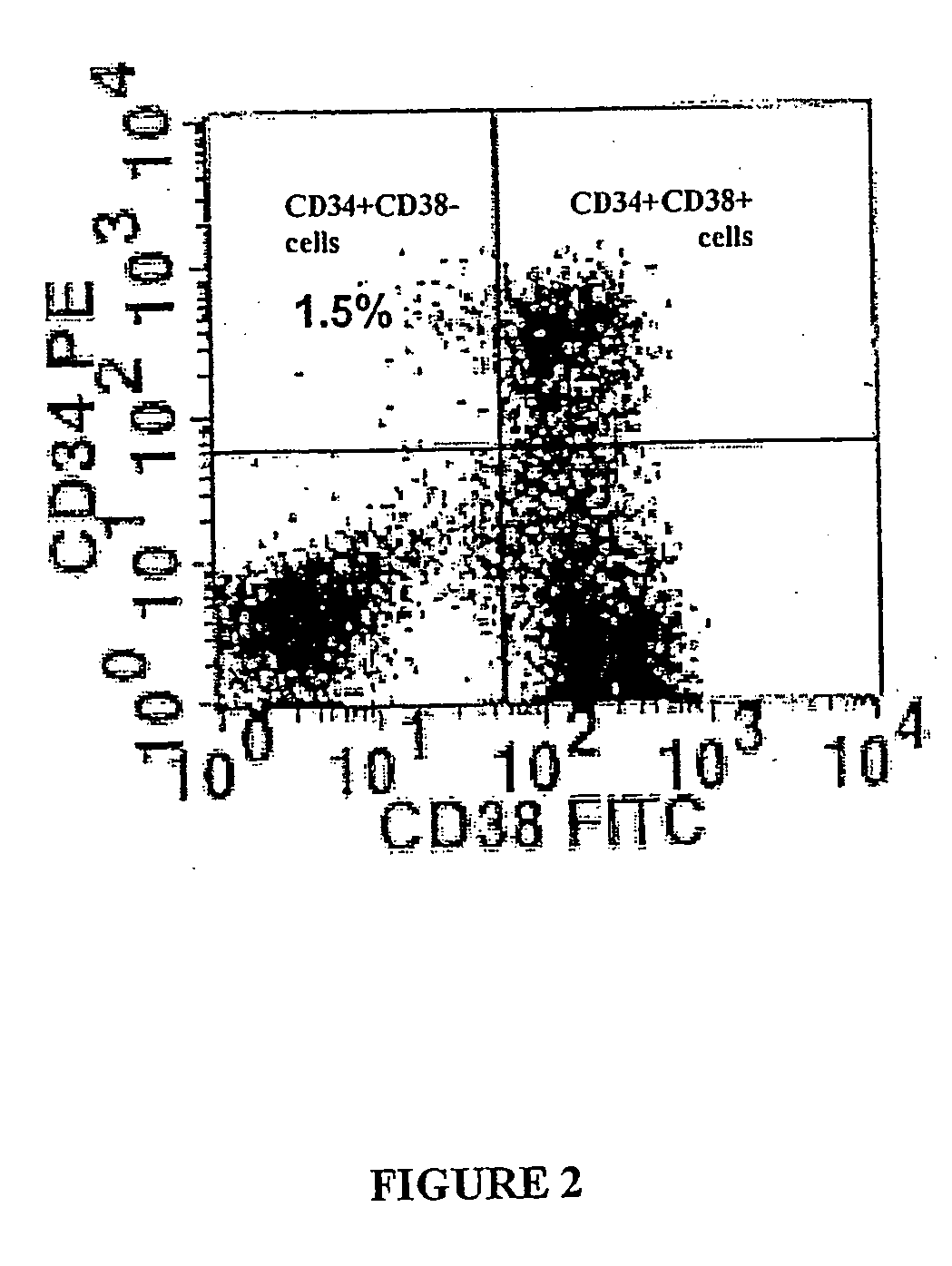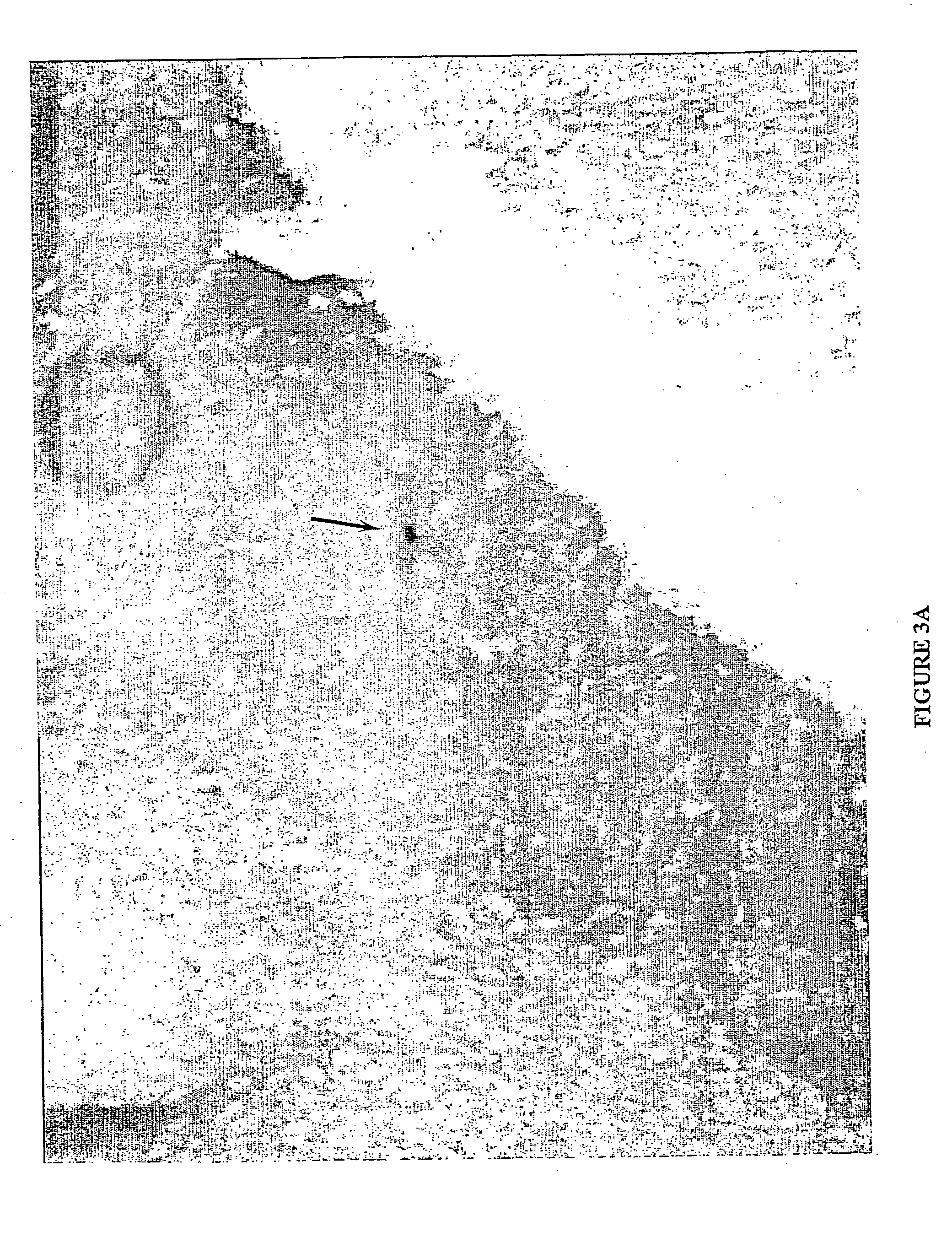Use of cd34+ hematopoietic progenitor cells for the treatment of cns disorders
a technology of cd34+ hematopoietic progenitor cells, which is applied in the field of cell therapy, can solve the problems of limiting the applicability of such macromolecules, poor cns agent delivery, and general lack of effective treatment of cns, so as to increase the bioavailability of molecules and prolong the possible duration of treatment
- Summary
- Abstract
- Description
- Claims
- Application Information
AI Technical Summary
Benefits of technology
Problems solved by technology
Method used
Image
Examples
example 1
Transplantation of Human Modified CD34+ Cells can Differentiate into Brain Microglia Expressing a Transgen. Materials and Methods
Lentiviral Vector
[0183] TRIP-ΔU3-EF1α-ALD lentiviral vector was constructed by replacing the enhanced green fluorescent protein (EGFP) cassette (BamHI / KpnI) from the previously described TRIP-ΔU3-EF1α-EGFP lentiviral vector (Sirven, A. et al., Blood 96, 4103-4110, 2000, and Sirven, A. et al., Mol. Ther., 3, 438-448, 2001) by a BamHI-EcoRI fragment containing the coding sequence of the human ALD cDNA (Mosser, J. et al., Nature, 361, 726-730, 1993). This self-inactivating (SIN) vector where the U3 region of the 3′LTR is deleted to improve the safety of the vector system includes the central polypurine tract (cPPT) and the central termination sequence (CTS) (Zennou, V. et al., Cell, 101, 173-185, 2000) that increases the gene transduction efficiency in human CD34+ hematopoietic cells (Sirven et al., 2000). The expression of the ALD gene is driven by the el...
example 2
Transplantation of Human Modified CD34+ Cells can Differentiate into Brain Microglia Expressing a Transgene. Results
Lentiviral Vector-Mediated ALD Gene Transfer into ALD Deficient CD34+ Cells
[0202] A 36-hour long transduction protocol characterized by the absence of cytokine prestimulation and low-cytokine serum-free medium was used. This allows effective transduction of CD34+ by lentiviral vectors in the late G1 phase (Sutton, R. E. et al., J. Virol., 73, 3649-3660) but avoid terminal differentiation.
[0203] CD34+ cells from 3 ALD patients whose ALD gene mutation leaded to a complete absence of ALD protein were used. After wash-out, cells were incubated for 72 hours in long-term culture medium without cytokines. Transduction efficacy was then analysed by the expression of ALD protein using immunocytochemistry. 37.5 to 56.5% (mean 47.2%) of ALD cells expressed ALDP (Table 1).
[0204] To examine the transduction efficiency in colony-forming cells (CFCs), ALD deficient CD34+ cells w...
PUM
| Property | Measurement | Unit |
|---|---|---|
| temperatures | aaaaa | aaaaa |
| thick | aaaaa | aaaaa |
| nucleic acid | aaaaa | aaaaa |
Abstract
Description
Claims
Application Information
 Login to View More
Login to View More - R&D
- Intellectual Property
- Life Sciences
- Materials
- Tech Scout
- Unparalleled Data Quality
- Higher Quality Content
- 60% Fewer Hallucinations
Browse by: Latest US Patents, China's latest patents, Technical Efficacy Thesaurus, Application Domain, Technology Topic, Popular Technical Reports.
© 2025 PatSnap. All rights reserved.Legal|Privacy policy|Modern Slavery Act Transparency Statement|Sitemap|About US| Contact US: help@patsnap.com



